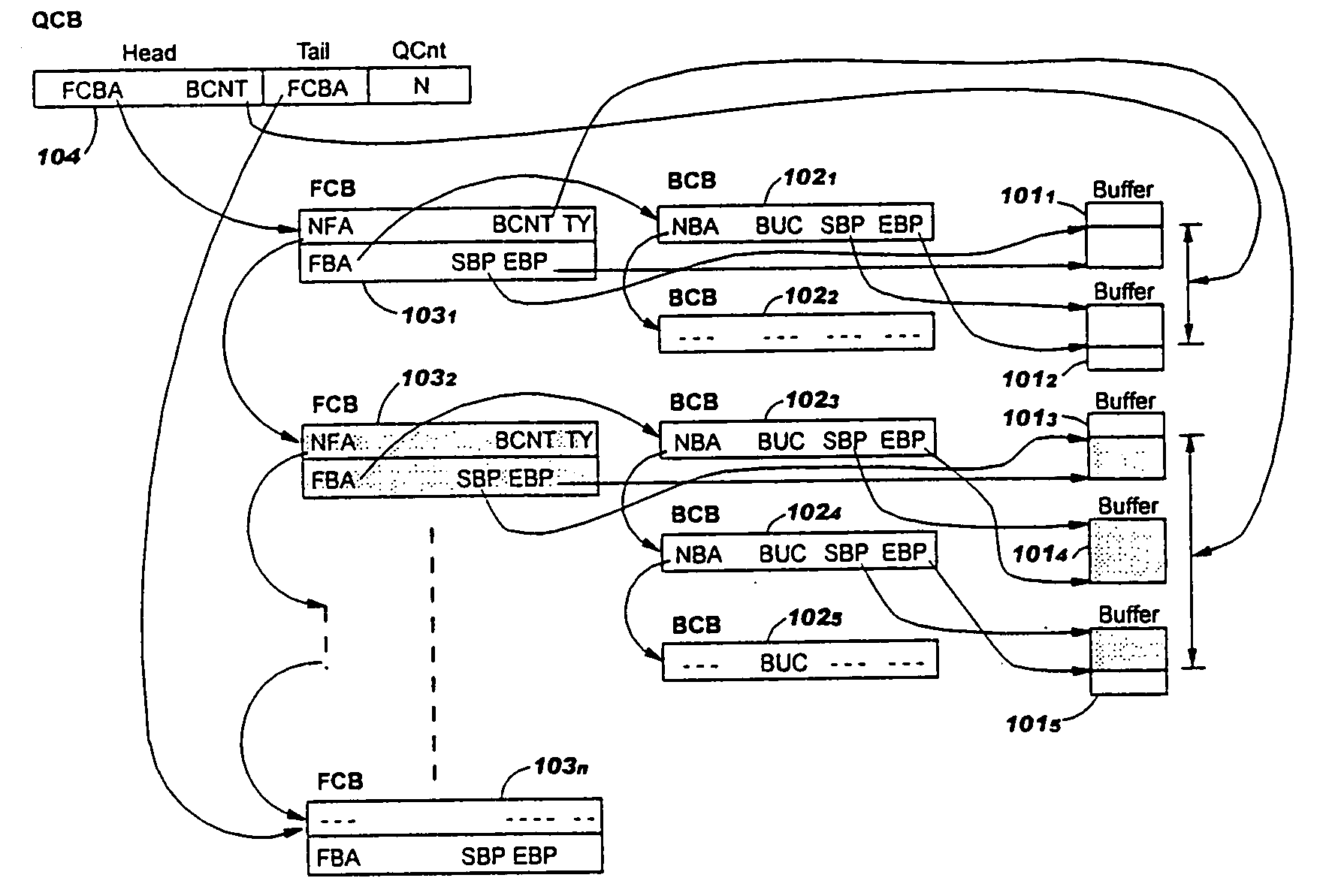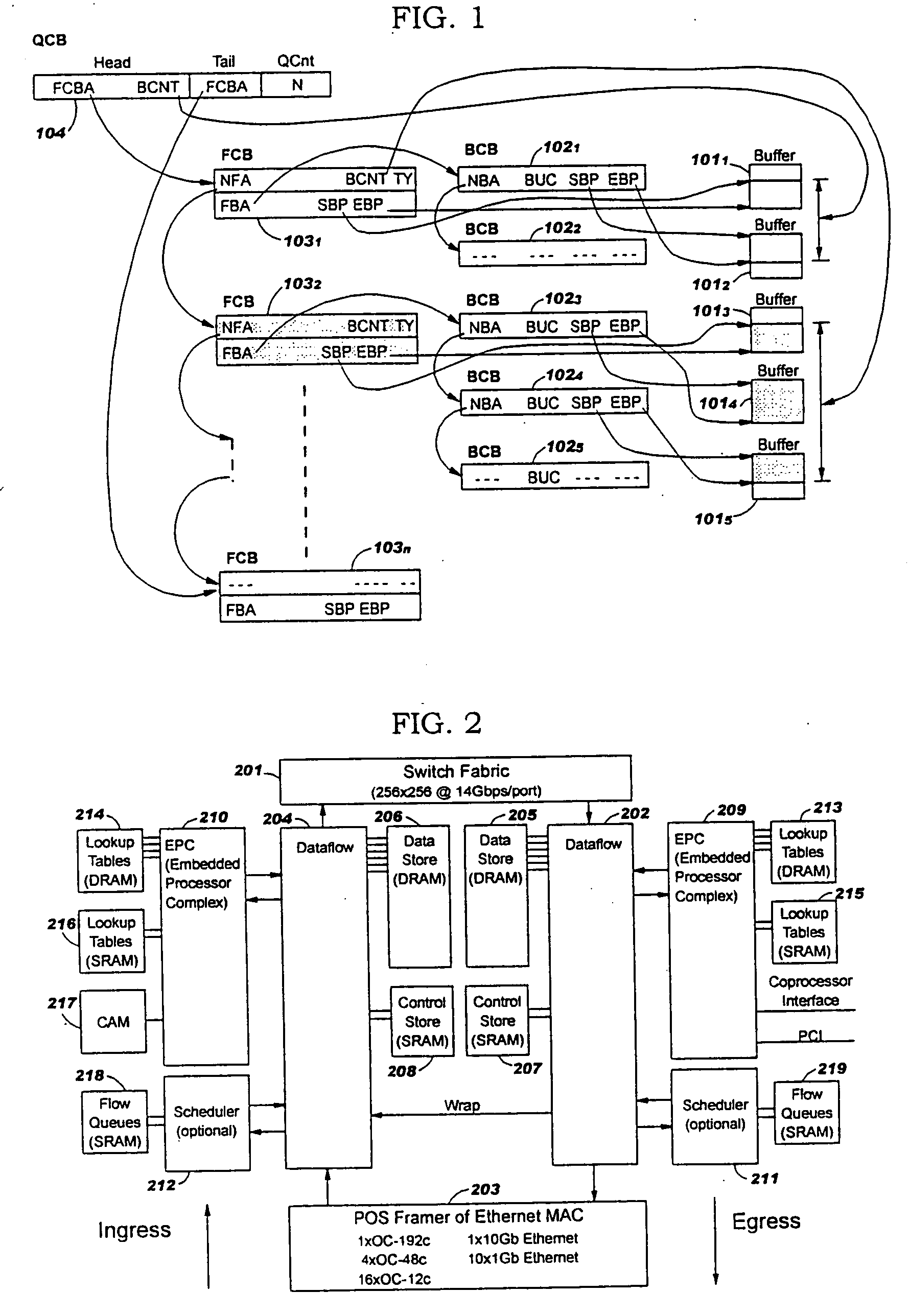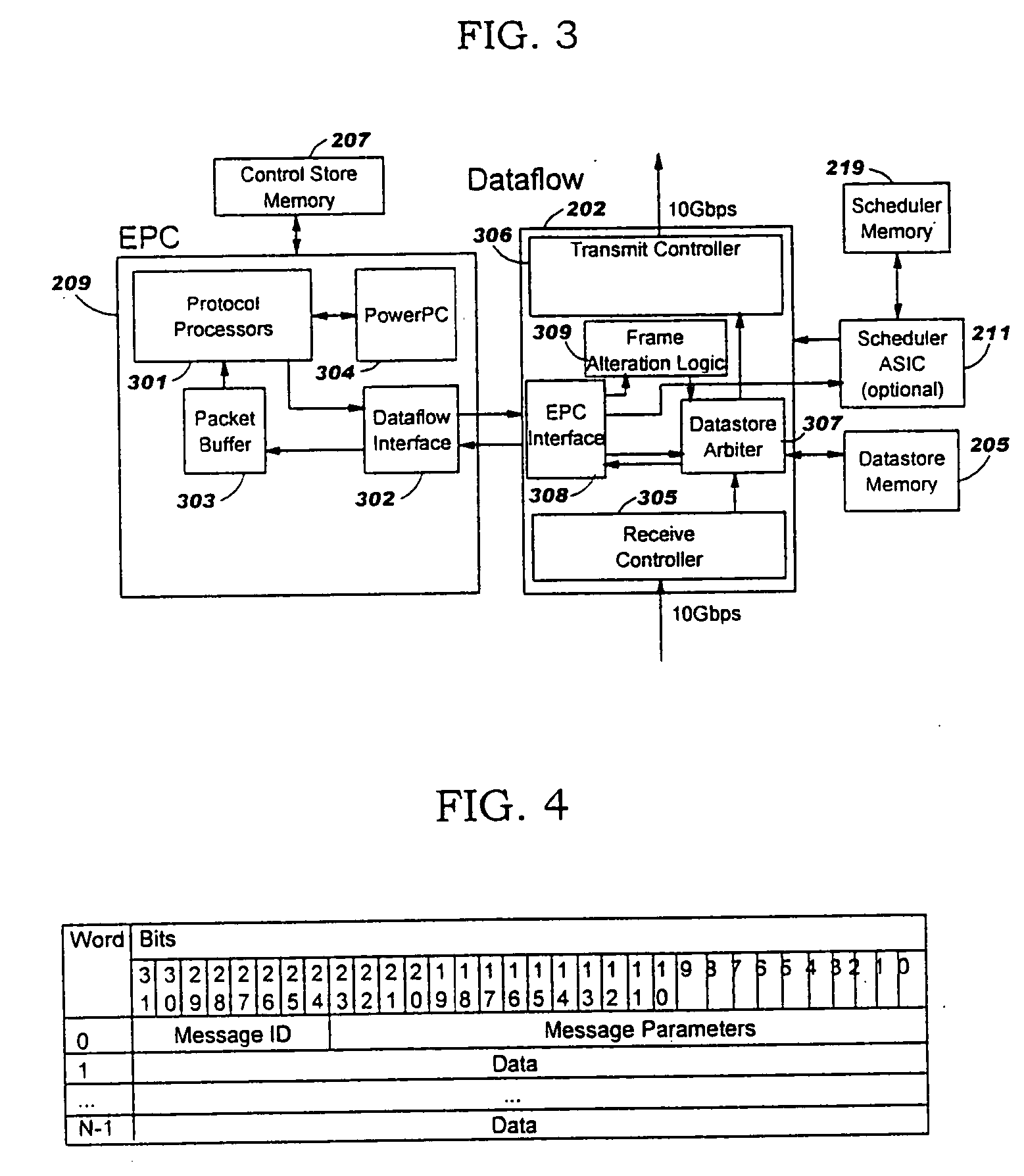Method for sharing single data buffer by several packets
a data buffer and packet technology, applied in the field of communication on a network by a network processor, can solve the problems of reducing system resources and performance to support high data rates, imposing a significant burden on memory allocation requirements, and reducing system resources and performance. the effect of memory allocation requirements
- Summary
- Abstract
- Description
- Claims
- Application Information
AI Technical Summary
Benefits of technology
Problems solved by technology
Method used
Image
Examples
Embodiment Construction
[0018]FIG. 1 is a block diagram illustrating data structures of an embodiment of the present invention 100. A frame is stored in a series of buffers 1011 to 1015. Each buffer 101 has a corresponding Buffer Control Block (BCB) 1021 to 1025, which is used to link the series of buffers into a frame. Each frame has a corresponding Frame Control Block (FCB) 1031 to 103n, which is used to link a series of frames into a queue. Each queue has a Queue Control Block (QCB) 104, which maintains the address of the first and last FCB 103 in the queue, and a count of the number of frames in the queue.
Data Structure Definitions
[0019] Buffers 101 are used for storage of data. In the present embodiment, each buffer 101 is 64-bytes in size and may store from 1 to 64-bytes of valid data. All valid data within a buffer 101 must be stored as a single contiguous range of bytes. Multiple buffers are chained together via a linked list to store frames larger than 64-bytes. Thus, the present invention may w...
PUM
 Login to View More
Login to View More Abstract
Description
Claims
Application Information
 Login to View More
Login to View More - R&D
- Intellectual Property
- Life Sciences
- Materials
- Tech Scout
- Unparalleled Data Quality
- Higher Quality Content
- 60% Fewer Hallucinations
Browse by: Latest US Patents, China's latest patents, Technical Efficacy Thesaurus, Application Domain, Technology Topic, Popular Technical Reports.
© 2025 PatSnap. All rights reserved.Legal|Privacy policy|Modern Slavery Act Transparency Statement|Sitemap|About US| Contact US: help@patsnap.com



